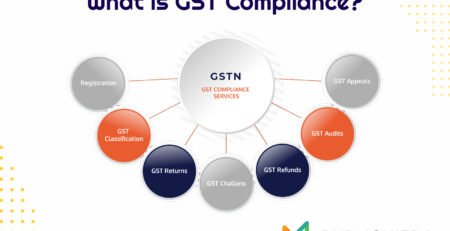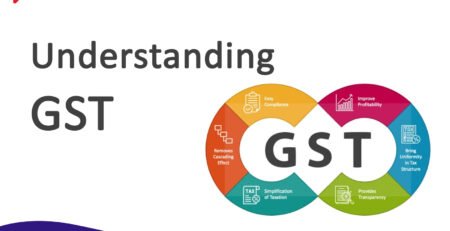Finance Isn’t Just for CFOs: 7 Financial Skills Every Manager Should Know
Introduction: Why Finance Belongs at Every Executive Table
For decades, finance was seen as the exclusive domain of CFOs, accountants, or finance departments. But in today’s fast-moving business environment, that mindset no longer works. Whether you’re leading sales, marketing, operations, HR, or strategy, the ability to interpret numbers, make data-driven decisions, and forecast outcomes is what separates effective leaders from those who are just guessing.
Think about it:
- A marketing manager approving a campaign must evaluate ROI.
- An operations head deciding on new machinery must calculate cost-benefit analysis.
- An HR leader proposing a new training program must justify it through budgeting and forecasting.
Simply put—if you can’t lead through numbers, you’re just guessing.
That’s why finance isn’t just for CFOs—it’s for every executive at the table. In this article, we’ll break down the 7 financial skills every manager must master to make smarter, more impactful business decisions.
The Shift: From “Finance is a Department” to “Finance is a Language”
Modern organizations don’t treat finance as an isolated function anymore. Instead, finance has become the language of business.
Executives across departments are expected to:
- Read financial statements like they read KPIs.
- Measure performance with ratios and not just gut feel.
- Translate business decisions into numbers for clarity.
- Communicate stories with data to inspire stakeholders.
Finance is no longer about bean-counting; it’s about value creation.
7 Financial Skills Every Manager Should Know
Let’s dive into the seven critical financial skills that can transform any manager into a stronger, more data-driven leader.
1. Financial Statement Analysis: Seeing the Story Behind Numbers
Financial statements are the backbone of any company’s reporting. Managers who can analyze them gain an inside look into performance, health, and growth opportunities.
Key skills include:
- Balance Sheet Understanding: Assets, liabilities, equity → What the company owns vs. owes.
- Income Statement Reading: Revenue, expenses, net profit → How money flows in and out.
- Cash Flow Statement Interpretation: Actual liquidity vs. accounting profit.
👉 For example: A sales leader can identify how delayed receivables affect cash flow, which impacts their team’s ability to scale campaigns.
Why it matters: Managers who can interpret financial statements make decisions that align with both short-term goals and long-term stability.
2. Cost Analysis: Knowing Where Every Dollar Goes
Every manager faces the question: “Is this worth the cost?”
Cost analysis helps answer it by breaking down fixed costs, variable costs, and opportunity costs.
- Fixed Costs: Rent, salaries—stable regardless of sales.
- Variable Costs: Raw materials, commissions—scale with production.
- Opportunity Cost: What’s lost when choosing one option over another.
👉 Example: An operations manager deciding between outsourcing logistics or building an in-house fleet uses cost-benefit analysis to determine which provides higher long-term value.
Why it matters: Without cost analysis, managers risk approving projects that drain resources without delivering returns.
3. Ratio Analysis: Simplifying Complex Data into Insights
Ratios turn dense financial data into actionable insights.
Common ratios every manager should know:
- Liquidity Ratios (Current Ratio): Can the business pay short-term obligations?
- Profitability Ratios (Net Margin, ROE): Is the business making enough profit compared to resources?
- Efficiency Ratios (Inventory Turnover): How effectively are assets being used?
👉 Example: A supply chain leader checking inventory turnover ratio can spot whether stock is moving fast or locking up working capital.
Why it matters: Ratios allow managers to benchmark against competitors and track progress over time.
4. Investment Analysis: Evaluating Returns Before Saying Yes
From buying new machinery to launching a marketing campaign, every business decision is an investment.
Managers must know how to:
- Calculate ROI (Return on Investment).
- Understand NPV (Net Present Value).
- Assess Payback Periods.
👉 Example: A marketing head deciding whether to invest ₹50 lakhs in a new digital campaign must forecast expected revenue and compare it to ROI benchmarks.
Why it matters: Investment analysis ensures managers put money into initiatives that create value—not just noise.
5. Budgeting & Forecasting: Planning the Future with Numbers
Budgeting is not just about controlling spending; it’s about allocating resources strategically.
- Budgeting: Sets the spending plan for the year/quarter.
- Forecasting: Predicts financial outcomes based on data and trends.
👉 Example: An HR manager rolling out a new training program must forecast the impact on employee productivity vs. costs to justify budget allocation.
Why it matters: Budgeting and forecasting ensure departments align with company-wide financial goals and avoid overspending.
6. Storytelling & Communication: Turning Numbers into Narratives
Numbers alone don’t inspire action. Stories do.
Great leaders turn raw financial data into clear, engaging narratives that drive decisions.
- Use visuals (charts, dashboards).
- Connect metrics to strategy (“This 5% cost reduction funds our next product launch”).
- Adapt communication for the audience (board vs. frontline managers).
👉 Example: A project manager pitching for budget extension can use storytelling with numbers to show how a small increase in spend translates into massive growth potential.
Why it matters: Finance without storytelling is cold; storytelling without finance is hollow. Together, they create impact.
7. Risk Assessment: Anticipating and Managing Uncertainty
Every business decision carries risk. Leaders must quantify and prepare for it.
Types of risk:
- Market Risk: Customer demand shifts.
- Operational Risk: Supply chain breakdowns.
- Financial Risk: Liquidity crunch, interest rate hikes.
- Strategic Risk: Wrong product launch or misaligned expansion.
👉 Example: A product head planning to enter a new geography must assess risks of currency fluctuation, regulation changes, and consumer adoption.
Why it matters: Risk assessment prevents managers from being blindsided and allows for contingency planning.
Finance in Action: How These Skills Transform Managers
When managers develop financial literacy:
- Marketing budgets become investments, not expenses.
- Operations streamline by focusing on cost efficiency.
- HR gains power by showing ROI of people programs.
- Strategy aligns with long-term shareholder value.
Finance becomes a shared responsibility instead of a CFO’s burden.
Practical Steps to Improve Your Financial Skills
- Take a Finance for Non-Financial Managers course.
- Read company financial reports quarterly.
- Ask finance partners to explain ratios and trends.
- Use tools like Excel, Power BI, or Tableau to visualize numbers.
- Practice storytelling with numbers in team meetings.
FAQs on Financial Skills for Managers
Q1: Why should non-financial managers learn finance?
Because every decision—from hiring to marketing—affects financial performance.
Q2: Do I need advanced accounting knowledge?
No. You need applied financial literacy, not full accounting expertise.
Q3: What is the easiest financial skill to start with?
Start with budgeting and ratio analysis; they are directly useful in daily decisions.
Q4: How does finance help managers in leadership?
It builds credibility, ensures alignment with strategy, and prevents guesswork.
Q5: What tools help managers improve financial literacy?
Excel, Power BI, Google Sheets, and visualization platforms like Tableau.
Q6: Are these skills relevant only in corporate settings?
No. Entrepreneurs, startups, and even NGOs benefit from financial skills.
Q7: How can managers practice risk assessment?
By running what-if scenarios and calculating impacts before committing to decisions.
Conclusion: Finance as a Core Leadership Skill
In today’s data-driven world, finance is not just for CFOs—it’s the universal language of leadership.
Managers who master financial statement analysis, cost analysis, ratio interpretation, investment evaluation, budgeting, storytelling, and risk assessment rise above the rest.
Because at the end of the day—if you can’t lead through numbers, you’re just guessing.
Finance gives managers the power to justify, inspire, and execute decisions with confidence. And that’s what makes organizations not just survive, but thrive.












